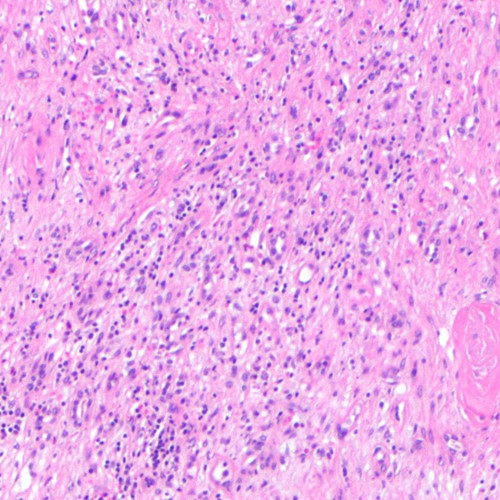There is something quietly unsettling about growing old. Wrinkles and grey hair may be the visible signs, but deep inside the body, far more dramatic changes unfold. Ageing is not just a slow decline; it is a fundamental reshaping of how our systems work. One of the most important—and damaging—shifts is the rise of chronic, low-level inflammation.
Unlike the quick, intense inflammation that heals a wound or fights off a virus, the type that builds with age lingers for years. This smouldering process, now known as “inflammaging,” has become central to our understanding of how age-related diseases begin and progress. From heart disease and diabetes to Alzheimer's and osteoporosis, inflammaging plays a key role. Scientists are now racing to understand this hidden fire—and how to control it.
How Ageing Disrupts the Immune System
The immune system protects the body throughout life, but it changes with age. As we grow older, immune responses become slower and less precise. This weakened defence is known as immunosenescence. It means the body struggles to clear infections, respond to vaccines, or detect emerging cancer cells.
At the same time, senescent cells—cells that have stopped dividing but won’t die—start building up in tissues. These cells may sound harmless, but they are not passive. They release pro-inflammatory chemicals like interleukins and tumour necrosis factor. Collectively, this output is called the senescence-associated secretory phenotype, or SASP. It creates a toxic neighbourhood, attracting immune cells and amplifying inflammation.
With age, the body also becomes less able to remove these senescent cells. They linger, damage nearby cells, and worsen tissue repair. In short, the ageing immune system is both sluggish and overly aggressive. This imbalance lies at the heart of inflammaging.
The Brain Under Siege: Inflammation and Neurodegeneration
The brain is not immune to the body’s changes with age. One of the most serious consequences of inflammaging is its impact on brain health. In younger people, the blood–brain barrier blocks harmful substances from reaching delicate brain tissue. But with age, this barrier becomes leaky. Inflammatory molecules and rogue immune cells slip through.
Once inside, they activate the brain’s resident immune cells—microglia. These are supposed to protect the brain, but when overactivated, they can cause harm. They release more inflammatory chemicals, which damage neurons and disrupt communication between brain cells. Over time, this inflammation leads to symptoms like memory loss, confusion, and slower thinking.
In diseases like Alzheimer’s, chronic inflammation contributes to the build-up of beta-amyloid plaques and tau tangles. In Parkinson’s, it supports the misfolding of alpha-synuclein proteins. What begins as a small immune response grows into a destructive force that accelerates brain ageing and degenerative disease.
A Gut Feeling: Ageing and Microbial Imbalance
The gut is home to trillions of microbes, many of which support digestion, immunity, and mental health. This community, called the gut microbiome, is vital to well-being. But as people age, the composition of the microbiome changes. Beneficial bacteria like Bifidobacteria decline, while harmful ones may grow.
These changes weaken the gut barrier. Tiny gaps open between cells, allowing microbial toxins and partially digested food to leak into the bloodstream. The immune system detects these intrusions and reacts with inflammation. Over time, this persistent immune response adds to the overall burden of inflammaging.
The gut and brain are deeply connected through the gut–brain axis. So, inflammation in the gut may also affect mood, cognition, and behaviour. This makes the microbiome not just a digestive player, but a central figure in the ageing process. Supporting gut health could become a powerful way to influence overall healthspan.
Muscles and Bones: Breaking Down from Within
Ageing affects movement in ways most of us notice eventually. Getting out of a chair becomes harder. Climbing stairs feels slower. This is not just due to less activity—it is the result of deep biological change. Muscles shrink and weaken in a condition called sarcopenia, while bones lose density and become fragile.
Inflammation is a key player in both processes. In muscle tissue, chronic inflammation reduces the body’s ability to rebuild fibres after damage. Satellite cells, which normally repair muscle, lose their function. Protein production drops. Over time, muscles become weaker and more vulnerable to injury.
In bone, senescent cells and inflammatory signals disrupt the balance between bone formation and breakdown. Osteoblasts (which build bone) decline, while osteoclasts (which break it down) remain active. The result is bone thinning, a higher risk of fractures, and longer recovery after injury. This gradual decline makes falls more dangerous and mobility harder to regain.
The Cardiovascular System in the Line of Fire
The heart and blood vessels are not spared by inflammaging. As the body ages, arteries stiffen and blood pressure rises. These changes increase the risk of stroke and heart attack. Inflammation accelerates this process by damaging the lining of blood vessels and encouraging the build-up of plaque.
Inside the arteries, immune cells respond to tiny injuries by releasing more cytokines. These signals cause nearby cells to grow and change, thickening the artery wall and narrowing the blood flow. Over time, this contributes to atherosclerosis, a major cause of heart disease.
Senescent cells in the heart muscle may also impair its ability to contract and repair. Mitochondrial dysfunction adds further stress by reducing the energy supply to the heart. Together, these processes increase the strain on the cardiovascular system, making it more vulnerable to even small health challenges.
Kidneys, Lungs, and Reproductive Organs Also Decline
As inflammation spreads, other organs suffer too. The kidneys gradually lose their filtering ability. Age-related inflammation causes damage to the glomeruli—the tiny filtering units—reducing their number and function. This increases the risk of fluid retention, high blood pressure, and toxin build-up.
The lungs become stiffer with age. Chronic low-grade inflammation causes the breakdown of elastic tissue and reduces the area available for gas exchange. Respiratory infections become more common, and recovery becomes slower. Reduced surfactant production in the alveoli also weakens lung efficiency.
Even the reproductive system is affected. In men, inflammation contributes to reduced testosterone production and erectile dysfunction. In women, declining oestrogen levels after menopause are linked to higher inflammation, increased cardiovascular risk, and bone loss. These changes affect both quality of life and the body’s resilience to stress.
What Helps: Nutrition, Exercise, and Emerging Therapies
Although inflammaging sounds bleak, research offers hope. A healthy lifestyle can reduce inflammation and support longevity. Diets rich in antioxidants, polyphenols, and omega-3 fatty acids reduce oxidative stress. These compounds are found in fruits, vegetables, nuts, and oily fish. They help stabilise cells and reduce immune overactivity.
Regular exercise supports immune balance, reduces fat deposits, and increases anti-inflammatory signals. Endurance training boosts telomerase activity and helps preserve white blood cells. Resistance training maintains muscle mass and reduces markers of cellular senescence.
Probiotics and prebiotics may support a healthier gut microbiome. Supplementing with zinc, vitamin C, and vitamin E has shown benefits in older adults. Each of these strategies works not by targeting inflammation directly, but by improving the systems that normally keep it in check.
Looking Ahead: Senolytics and Precision Ageing Medicine
One of the most exciting areas in anti-ageing research is senolytics—drugs designed to remove senescent cells. These compounds aim to stop the root cause of chronic inflammation rather than just its symptoms. Quercetin and dasatinib have already shown promise in animal studies.
Other substances like metformin, taurine, and spermidine support mitochondrial health and reduce oxidative stress. These compounds affect cell signalling pathways that control inflammation, repair, and energy production.
Personalised medicine may also play a role in the future. Understanding each person’s unique biology, microbiome, and risk factors could allow for tailored anti-inflammatory strategies. This approach could extend healthspan—the number of years lived in good health—rather than just lifespan.
Conclusion: Ageing Is Not Passive
Ageing is not simply a matter of time. It is a dynamic biological process, shaped by internal and external pressures. Chronic inflammation is one of its strongest forces, influencing everything from memory to mobility. Yet, this process is not beyond our influence.
Through diet, movement, and science-backed treatments, it is possible to reduce inflammation and protect the body’s core functions. Ageing may be inevitable, but the speed and severity of decline are not set in stone.
By addressing inflammaging now, we prepare not just for longer lives, but for better ones.
The study is published in the journal Biomolecules. It was led by Mario García-Domínguez from CIMA-Universidad de Navarra.





